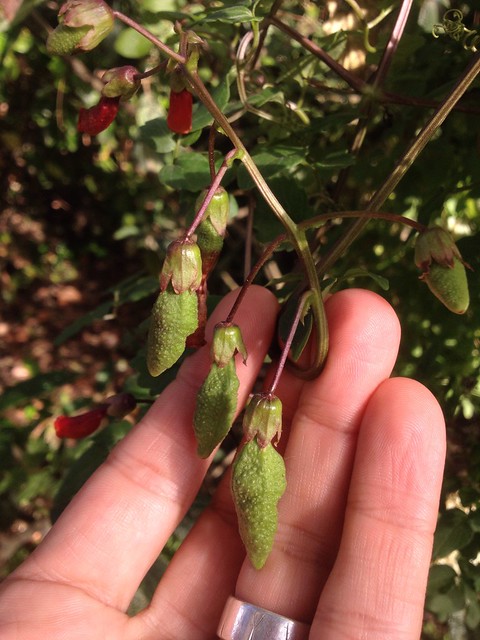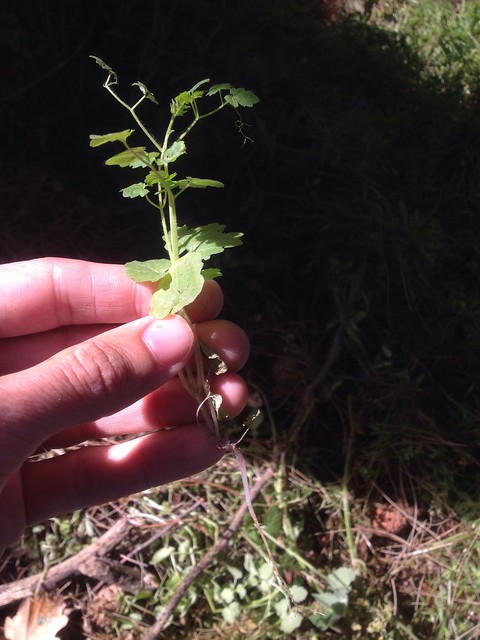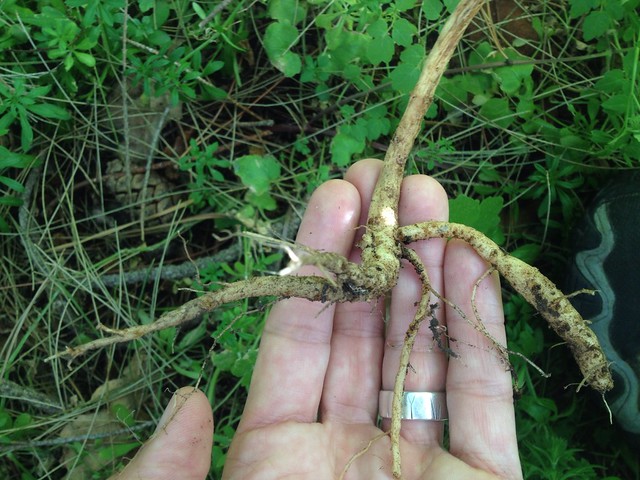RECENT ARTICLES
- CEBRA: An optimised and standardised sampling protocol for BioBlitz
- Stop it people, the plural of anecdote IS data!
- That's no pollinator, that's a flower visitor
- Add a scale to your macro photos
- What to photograph when counting the wild
- Imagine counting the wild on EVERY street in a city!
- My wild counting workflow
- A butterfly flew through
- Why iNaturalist observations without photos can be research grade
- Why you shouldn’t use a spreadsheet for data entry
- All articles ...
New weeds are taking root just over your shoulder
In a gardening-mad culture like New Zealand, new weeds are jumping the fence all the time. Early detection is essential if we’re to stop the worst of them.
written Nov 4, 2015 • by Jon Sullivan • Category: Wild Changes

In September I wrote of my surprise at finding the first Chilean glory creeper I had seen in Christchurch. It’s a fast growing, well dispersing, aggressive vine, similar in many ways to the infamous New Zealand weed Old Man’s Beard (Clematis vitalba).
Unlike Old Man’s Beard, Chilean glory creeper (Eccremocarpus scaber) is just at the beginning of trying to get established. It’s an incipient weed and already a nationally unwanted organism that is banned from sale, propagation, and distribution by the National Pest Plant Accord. It was also the Environment Canterbury weed of the month of July 2008. As a weed to watch out for, it’s already won all the awards.
I was gobsmacked to find a patch of the plant today at Lincoln University, and just 10 m off a path that I walk just about every week. To my knowledge, the species has never been recorded from Lincoln (and I’ve looked for records in all the usual places like the Australasian Virtual Herbarium).


It was growing in a shaded part of the garden under an old Corsican pine, east of the university’s Commerce building. I wouldn’t have noticed it if it hadn’t been flowering, but I recognised it immediately as soon as I saw its bright yellow and orange tubular flowers. It must have been here for more than a year though as, on looking closer, I found at least two adults with tuber roots and at least 15 juveniles including young seedlings. I expect it arrived last year, somehow, and the young I found are the next generation. The adults were flowering and had developing immature seed pods. I found it just in time.

I’ve pulled out or uprooted everything I could find but it’s likely that some of it has survived. I’ll keep an eye on it. At least this patch won’t seed this year.
The bigger question is where it came from. It produces large amounts of wind-dispersed seeds so the parent of this patch could be quite a distance away. [Update: After asking around, I learned from Lincoln University’s horticulture lecturer Roy Edwards that there has been one established old plant growing through a shelter-belt across the road from the university for many years. It’s not clear why it’s spreading now.]

For me this underscores the big challenge for surveillance of incipient weeds. Weeds are easiest to stop early in their invasion, but that requires that we find those populations early in their establishment. I must have walked near this plant 50 times in the past year and not noticed it. I’ve recently also found one plant at my son’s school. It makes it likely that there are a lot more Chilean glory creepers out there creeping their way into Christchurch.
Please keep a look out for this species right now, while it’s in flower, and if you think you might have found one please post a photo of it on iNaturalist NZ. How many other surprises are out there quietly establishing in the out of the way places just over your shoulder?